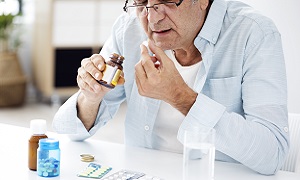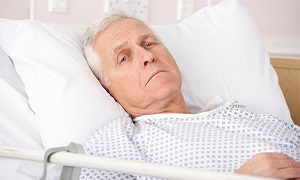Sigmoidoscopy
Sigmoidoscopy is a test where your doctor examines the rectum and lower part of the colon. The colon is your large intestine and its lower part is known as the sigmoid colon. The sigmoid colon ends in your rectum, where the waste is collected before it leaves your body when you are having a bowel movement.
Sigmoidoscopy, which is also termed as flexible sigmoidoscopy, can help your doctor to look for ulcers, cancer, polyps or abnormal cells. In this procedure, typically tissues are taken as samples for checking for any abnormal changes in the cells.
Purpose
Sigmoidoscopy can help your doctor investigate possible causes of abdominal pain, changes in bowel habits, rectal bleeding, chronic diarrhea or any other problems related to the intestine.
If you are over 50 years of age, it puts you at average risk for colon cancer, which is why your doctor may recommend a flexible sigmoidoscopy exam every five years to screen for colon cancer.
Though sigmoidoscopy helps in screening for colon cancer screening, there are other options as well, which can allow your doctor to view the whole colon, such as colonoscopy.
Occasionally, sigmoidoscopy is preferred over colonoscopy as it takes lesser time, and doesn’t require an anesthetic. There are also lower risks.
Preparation
Before going through a sigmoidoscopy exam, it is important to empty your colon. If there is any residue in your colon, it can obscure the view of your colon and rectum during the procedure.
To empty your colon, it is important to carefully follow your doctor’s instructions. Your doctor might ask you not to consume any food the day before you undergo the exam. Instead, you can consume plain water, carbonated beverages, broth as well as tea and coffee without any milk or cream. The doctor may also ask you not to eat or drink anything after midnight the night before your exam.
Your doctor may ask you to take a laxative, which will be either in pill or liquid form.
You will also need to use an over-the-counter enema kit, typically a few hours before the exam, for emptying your colon. You might also be asked to take two enemas.
If you take medications or supplements, remind your doctor about them at least a week before the exam. You may need to temporarily stop the medications or adjust the dosages for some time.
Procedure
You’ll need to wear a gown and begin the exam lying on your left side on the exam table. Then you need to draw your knees toward your abdomen. Then the sigmoidoscope, which is a thin and flexible tube, will be inserted into your rectum. The tube has a light as well as a very small camera on the end, which helps images to be transmitted onto a monitor for the doctor to see. The tube also inflates your colon with some air, making it easier for your doctor to examine.
Please note that when the scope is moved or air is introduced, you might experience abdominal cramping or the urge to move your bowels.
This exam should take around 15 minutes. If biopsies are taken, it may require slightly more time. Usually, sedation and pain medications aren’t required. If a polyp is found, your doctor might recommend a full colonoscopy to examine the entire colon, as there might be other polyps present further up in the colon.
After the procedure
After the exam, you should be able to return to your usual diet and activities. However, you might experience mild discomfort after the exam. You might feel bloated or pass gas for some hours as the air is cleared from your colon. Walking should help relieve the discomfort.
You might also notice a little blood with your first bowel movement after the exam, for which there is no reason to worry. You can consult your doctor if you continue to pass blood or blood clots or if you experience persistent abdominal pain or a fever of 100 F or higher.
If your results are negative, that means your doctor hasn’t found any abnormalities in your colon. If you’re above fifty years of age, then you may be at average risk of colon cancer. So your doctors can recommend the exam again after five years.
If your results are positive that means your doctor found polyps or abnormal tissues in your colon. You might require additional testing, such as colonoscopy, depending on the findings. The abnormalities will be examined more thoroughly, biopsied or removed.


